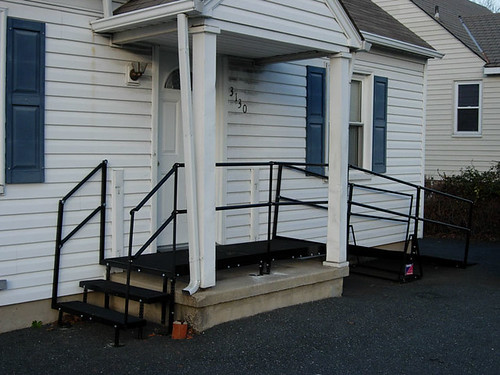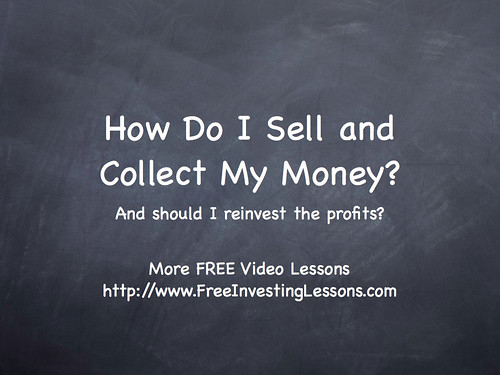
For most of our adult lives my husband and I had wanted to build a house. It took his stroke for us to finally take the plunge. We really had no choice. The two houses that we owned were not good candidates to retrofit for Don's newly acquired needs and there were virtually no wheelchair accessible houses on the market.
Finding a builder who was knowledgeable about Universal Design in a town of 600,000 should have been easy---after all, the concept has been around since the 1980s---but it wasn't. The Home Builder's Association only listed one builder who specialized in that market niche and although his houses were beautiful, customized homes his starting price was twice what we had wanted to spend. But he was passionate about building for the disabled and even though he knew we couldn't afford his services he was generous with his time and he gave us the confidence we needed to go forward with our project.
All totaled, we called twelve well-known builders. Some had never heard of the term Universal Design. We were shocked! Other builders never returned our calls which, we believe, was a form of prejudge against the disabled. The building company we finally went with had built three wheelchair accessible houses, so they said, but we quickly found out that we had to bring our own research in to the design stage of the project. They were willing and able, but we were the experts when it came to Don's special needs.
Universal Design is not rocket science, but there is a wide variety of choices and decisions to be made. Just as every disability is different, every house for the disabled will be different based on the options taken and the budget you have to work within. The core, essential features of Universal Design homes are:
* at least one no-step entry way
* one floor living (or a budget for an elevator or chair lift)
* 36" exterior and interior doorways
* thresholds on the doorways that are flush with the floor
* a roll-under sink in the bathroom
* reinforced bathroom walls around the toilet and tub for the grab bars
* four foot wide hallways
* a five foot open radius in the centers of the bathroom and kitchen
* a roll-in shower stall or transfer tub that fits the special needs of your disability
In additions to above requirements, there are many optional features that can be incorporated into home to make it easier for someone with a disability. A few optional features of Universal Design that we included through out our house were: 1) lever-style door handles; 2) lower windowsills than the norm, so that Don gets a better view from a seated position; 3) single lever faucet handles; and 4) the carpeted rooms have a very short looped carpet with a dense commercial grade padding underneath that is glued on both sides. (The wrong choice of carpeting and padding can make it difficult-to-impossible for wheelchair and walker users.)
In the kitchen, a side-by-side refrigerate is a must-have for people in wheelchairs. We also included two microwaves---one low for Don, one high for me. The cupboard below our kitchen sink opens up fully from the countertop to the floor so that Don can get his wheelchair up under the sink. A section of our countertop is also open underneath and lower so that Don has a work station in the kitchen. There are many Universal Design options available for a kitchen including hydrolytic cabinets that go up and down and oven doors that open from side to side but this is an area of planning that will quickly drive up the cost of your home. The few options that we did include in the kitchen fit our life style perfectly with a minimal impact on our budget.
Our garage takes advantage of several common Universal Design features. The overhead doors are eight foot high, instead of the standard seven so that a pop-up van will fit. The garage is also large enough to unload a wheelchair from the side or the back of a van. We also have a parking space for an electric wheel chair with an outlet for the charger and a grab bar for transfers. Our electrical service box is in the garage instead of the standard basement placement. Another feature that is a favorite of Don's is that the entire garage floor is a gently slope.
This eliminates the need for a wooden ramp. To push himself around in his manual chair, Don only has the use of one arm and one leg and with a conventional ramp he would not have been able to roam freely from the house to the garage without my help. Our front sidewalk uses the same gentle sloping principl, so there is no visible ramp advertising that a disabled person lives within.
Anyone who is thinking of building a Universal Design house will find building component for the disabled all over the internet. A few books and magazines of plans are also available. Your local rehab hospital may also put out a pamphlet; ours did, as did the local Home Builder's Association. Most helpful was our local Advocates for the Disabled office; they had a specialist in Universal Design, disabilities and local building codes who reviewed our plans free of charge and made suggestions.
He also gave us a scale model wheelchair to run around the blueprint to look for ways to fine tune things like the swing of the doors, furniture and outlet placements, turn spaces for the wheelchair, etc. This was a very useful little tool. We also had my husband's occupational therapist go over the master bath plans so that we got it just right for his needs. (For resale purposes, we set up the master bath for a right-side disability and our spare bath is set up for a left-side disability but we've been told that most Universal Design houses sell by word of mouth---before they hit the open market---so resale value is not really an issue with these houses.)
If you decide to build a Universal Design house, my advice would be to start your research early and take your time doing it. Don't just build for what your disability is today, think down the road ten or fifteen years. Don't sign off on your blueprint until you are satisfied with your choice of options and the price. The Universal Design features that we included added just under $4,000 above the cost of building a conventional house and it was tax deductible.
A house built for a disabled person does not need to look any different from its neighboring houses. If you didn't see the grab bars in our bathrooms, no one would ever guess that our home is Universal Design. I honestly don't understand why able-bodied baby boomers who are building don't have the foresight to incorporate Universal Design into their plans. Even now that the house is almost a year old, we still can't believe that this beautiful, well-thought out and functional perfect house is really ours. Our only regret is that it took a stroke to get it built. ©
wheelchair ramps nashville tnTell President Obama: for real job growth, stop spending and cut the debt.
Crossroads GPS: "<b>News</b>" - YouTubeNews Corp. officials have publicly defended The Daily, which News Corp. CEO Rupert Murdoch thought would serve as a template for newspapers' transition to the tablet era. Murdoch's team worked closely with Apple and its ...
The Daily Lays Off a Third of Its Staff - AllThingsD... among science journalists — but the new site will have more audio and video, more information on our Fellows, and a gradually-growing set of Knight Science Journalism Trackers to follow science and health news daily.
Knight Science Journalism Program at MIT






